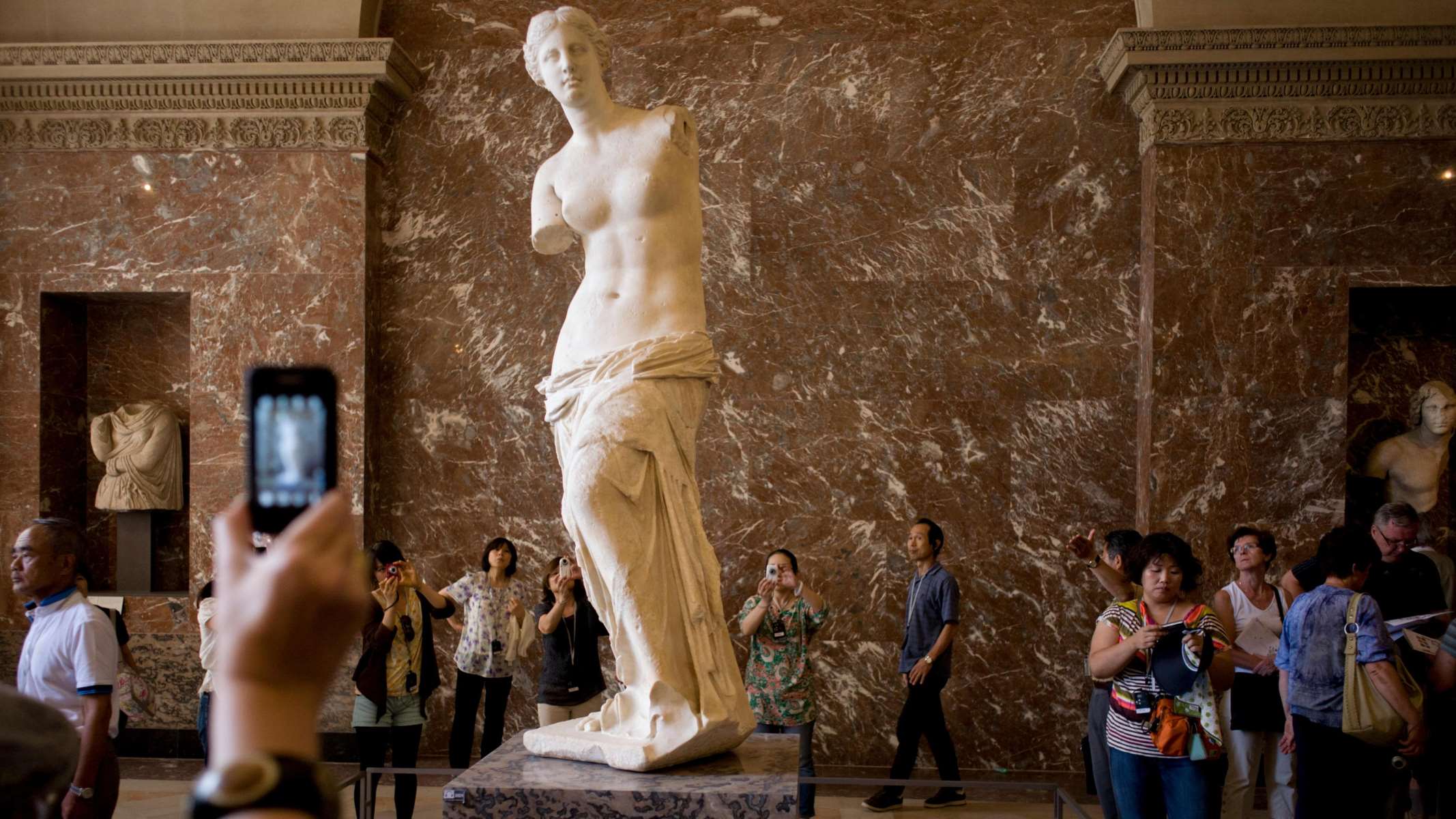
Why is the Venus de Milo so famous? The Venus de Milo is one of the most iconic sculptures in the world. Created around 150-125 BC, this ancient Greek statue represents Aphrodite, the goddess of love and beauty. Its fame stems from its mysterious origins, missing arms, and stunning craftsmanship. Discovered on the island of Milos in 1820, it quickly captured the imagination of art lovers and historians. Today, it resides in the Louvre Museum in Paris, drawing millions of visitors each year. The statue's allure lies in its blend of beauty, mystery, and historical significance, making it a timeless masterpiece.
The Origins of Venus De Milo
The Venus De Milo is one of the most famous sculptures in the world. Its history is rich and fascinating, filled with intriguing details that span centuries.
- The Venus De Milo was discovered on April 8, 1820, by a farmer named Yorgos Kentrotas on the Greek island of Milos.
- It is believed to have been created between 130 and 100 BCE during the Hellenistic period.
- The statue is thought to represent Aphrodite, the Greek goddess of love and beauty, known as Venus in Roman mythology.
- The sculpture is made from Parian marble, a high-quality material prized in ancient Greece for its fine grain and pure white color.
The Journey to the Louvre
After its discovery, the Venus De Milo embarked on a journey that would eventually lead it to the Louvre Museum in Paris.
- French naval officer Olivier Voutier played a crucial role in recognizing the statue's significance and bringing it to the attention of French authorities.
- The French ambassador to the Ottoman Empire, Marquis de Rivière, acquired the statue and presented it to King Louis XVIII of France.
- In 1821, the Venus De Milo was donated to the Louvre Museum, where it remains on display to this day.
- The statue was initially displayed in the Galerie des Antiques, a section of the Louvre dedicated to ancient sculptures.
The Mystery of the Missing Arms
One of the most intriguing aspects of the Venus De Milo is its missing arms, which have sparked much speculation and debate.
- When the statue was discovered, it was already missing its arms, leading to various theories about their original position and what they might have held.
- Some scholars believe the statue may have held an apple, a reference to the mythological story of the Judgment of Paris.
- Others suggest that the statue could have been holding a shield or a mirror, common attributes of Aphrodite in ancient art.
- Despite numerous attempts to reconstruct the missing arms, their exact position and appearance remain unknown.
Artistic Significance and Influence
The Venus De Milo has had a profound impact on art and culture, inspiring countless artists and becoming a symbol of classical beauty.
- The statue is considered a masterpiece of Hellenistic sculpture, known for its graceful proportions and intricate details.
- It has influenced many artists, including the French sculptor Auguste Rodin, who admired its beauty and craftsmanship.
- The Venus De Milo has been featured in various works of literature, music, and film, cementing its status as a cultural icon.
- The statue's enigmatic expression and serene demeanor have captivated viewers for centuries, making it one of the most beloved works of art in history.
The Venus De Milo in Popular Culture
Beyond the art world, the Venus De Milo has made its mark in popular culture, appearing in various forms of media and entertainment.
- The statue has been referenced in numerous films, including "The Adventures of Tintin" and "The Simpsons."
- It has also appeared in music, such as the song "Venus de Milo" by the band Television.
- The Venus De Milo has been featured in advertising campaigns, often used to symbolize beauty and elegance.
- The statue has even inspired fashion designers, with its draped clothing and classical style influencing modern fashion trends.
Preservation and Conservation Efforts
Preserving the Venus De Milo for future generations is a priority for the Louvre Museum and art conservationists.
- The statue has undergone several conservation efforts to ensure its stability and prevent deterioration.
- In 1936, the Venus De Milo was moved to a specially designed room in the Louvre to protect it from potential damage.
- During World War II, the statue was evacuated from the Louvre and hidden in a safe location to protect it from bombings and looting.
- Modern technology, such as 3D scanning and imaging, has been used to study the statue and monitor its condition.
Fun Facts about Venus De Milo
Here are some lesser-known facts that add to the allure and mystique of the Venus De Milo.
- The statue stands at 6 feet 8 inches tall, making it an imposing and impressive figure.
- Despite its fame, the Venus De Milo's creator remains unknown, adding to the statue's mystery and intrigue.
Timeless Beauty of Venus de Milo
Venus de Milo remains one of the most iconic sculptures in history. Its mysterious origins and missing arms only add to its allure. Created during the Hellenistic period, this masterpiece has captivated art lovers for centuries. Found on the Greek island of Milos in 1820, it now resides in the Louvre Museum in Paris, drawing millions of visitors each year.
The sculpture's intricate details, from the drapery to the serene expression, showcase the skill of ancient Greek sculptors. Despite debates about its original pose and purpose, Venus de Milo continues to inspire artists and historians alike. Its enduring appeal lies in its timeless beauty and the mystery that surrounds it. Whether you're an art enthusiast or a casual observer, Venus de Milo offers a glimpse into the rich cultural heritage of ancient Greece.
Was this page helpful?
Our commitment to delivering trustworthy and engaging content is at the heart of what we do. Each fact on our site is contributed by real users like you, bringing a wealth of diverse insights and information. To ensure the highest standards of accuracy and reliability, our dedicated editors meticulously review each submission. This process guarantees that the facts we share are not only fascinating but also credible. Trust in our commitment to quality and authenticity as you explore and learn with us.


